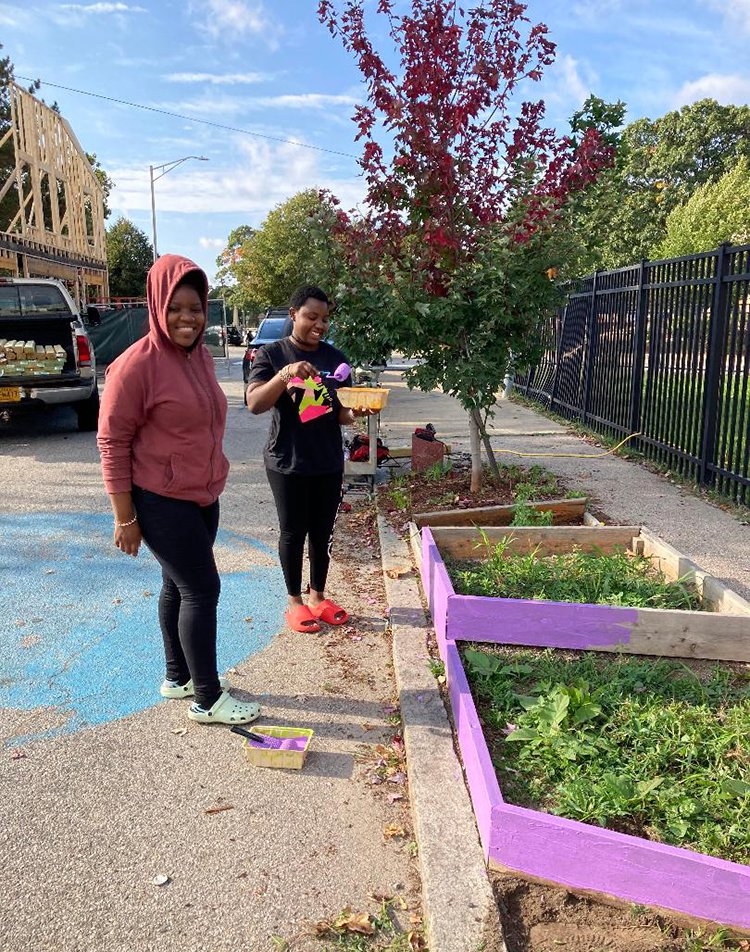Providence’s Street Trees Aren’t Distinctively Native on Purpose
Non-native species help create diversity and protect against mass die-offs
October 24, 2021
PROVIDENCE — While some of us are raking leaves this time of year, others are planting trees. By the end of this month, the city’s Parks Department, in collaboration with volunteers from the Providence Neighborhood Planting Program, will have planted up to 550 trees on public and private land.
Street trees clean the air, cool neighborhoods, and raise property values. But tree canopy coverage, like open green space, is often a benefit enjoyed by Providence’s more affluent neighborhoods. City officials said they are committed to spreading tree wealth.
Trees are important in mitigating the heat-island effect, where built urban areas absorb heat and have higher-than-average temperatures than non-urban areas. Trees also contribute to better health outcomes, such as lower obesity rates and fewer instances of Type 2 diabetes and asthma. Urban woodlands also help mitigate climate change, by sequestering carbon and reducing flooding. They also provide wildlife habitat.
But not all trees supply these benefits equally. Cassie Tharinger, director of the Providence Neighborhood Planting Program (PNPP), noted the larger the tree, the better the benefits.
“All trees serve a purpose, but it’s the large shade trees that give us those critical services we are looking for,” she said.
Since its inception in 1988, PNPP — established as a public-private partnership between the city, its residents, and the Mary Elizabeth Sharpe Providence Neighborhood Planting Endowment — has planted some 13,000 street trees in collaboration with neighborhood groups. The nonprofit shares the costs of street trees with the Providence Parks Department in a 50/50 match.
Space is a premium, and Tharinger and her team plant for diversity and size. Not every plat can support a large tree, and street trees are constrained by soil compaction, pit size, property size, and how much room they have to grow.
“Providence is an old city and many of our neighborhoods have narrow sidewalks, it’s just how they are built,” said Doug Still, Providence’s forester. “Trees don’t have the rooting space they would have in a park or in the wild.”
Providence has conducted two street tree inventories since 2005. The most recent one showed the city has about 25,000 street trees. The most common species in the city is acer platanoides, more commonly known as the Norway maple. In total, the city features 184 species of trees and related cultivars.

Tharinger and her team look for a good spread of different tree species and sizes. Native tree species are planted on the city’s green spaces. Non-native species are also planted, so long as they aren’t considered invasive.
“Our main concern is to plant trees that are not invasive,” Still said. “Not so much whether a tree is native or non-native.”
He noted city streets aren’t a native environment for trees, and planting non-native species ensures diversity and avoids a possible mass die-off in the future.
When planting street trees, city officials look for species that can withstand the harsh reality of urban life. Cities and other built-up areas have untraditional hazards that trees in the wild otherwise would not face. The biggest problem when planting street trees is compacted soil underneath sidewalks. In the wild, soil has plenty of air in pores for trees to really spread out their roots. Underneath sidewalks, however, the air in any pores in the soil has been squeezed out, leaving suboptimal soil for roots to grow in.
“The soil under streets is the most compacted soil can get, both from its installation and automobile use,” Tharinger said. “It’s like concrete many, many feet down.”
Still also keeps an eye on outside invasive pests, with the emerald ash borer on the top of his list. An adult ash borer is about a third of an inch long and identifiable by its dark-green hue. Originally from Asia, it was discovered first in North America in the Chicago area in 2002. Since its discovery here, it has spread through the Midwest and southern Canada and has caused the death of some 100 million trees. Still said he hasn’t planted a single ash tree since he became city forester, long anticipating the arrival of this pest. They kill any ash tree left untreated.
“We can tolerate to a certain extent insects and diseases on our trees so its not causing a large die-off,” he said. “But there’s going to be a massive die-off of ash trees in Providence and Rhode Island unless ash trees are treated.”
City park officials use azadirachtin, a systemic bioinsecticide injected directly into a tree’s trunk. It does not directly kill the emerald ash borer, but it prevents it from molting and dampers fecundity. Providence’s canopy contains some 1,800 ash trees, or about 7 percent of the total canopy.
Regardless of invasive insects, about 450-500 street trees are removed annually by old age or storm damage. The city has 27 percent tree canopy coverage, according to Still. New trees are planted in the neighborhoods with the lowest tree canopy.
Providence sources its street trees almost exclusively through Bigelow Nurseries Inc. in Northborough, Mass.




Ugh, Norway maple. I hope they’re not still planting it, since it is considered to be invasive in the Northeast.
Please plant, protect, and preserve our highway buffers .
The 1o9 trees that were recently ‘mowed down’ at Aldrich st, along I-95 , in South Providence ,brings to light the ability of company’s, such as Lamar advertising, to cut first and ask questions later. We lost a ‘ Century’ of shade and protection from the highway noise and polution.
Let us plant 300 more trees in South Providence, and replace the 109 trees that were removed for no reason.
We need a new stronger ordinance that protects the enviorement against moves likes this from happening again.
What is a 60′ tree worth, x 109?
Tree Boxes:
https://www.stormwaterassociation.com/tree-box-filters
https://www.storm-tree.com/ Local !!!!
https://www.lid-stormwater.net/treeboxfilter_home.htm
http://www.pvpc.org/sites/default/files/files/PVPC-Tree%20Box%20Filters.pdf
Municipalities should consider incorporating these into the street sidewalks!!!!